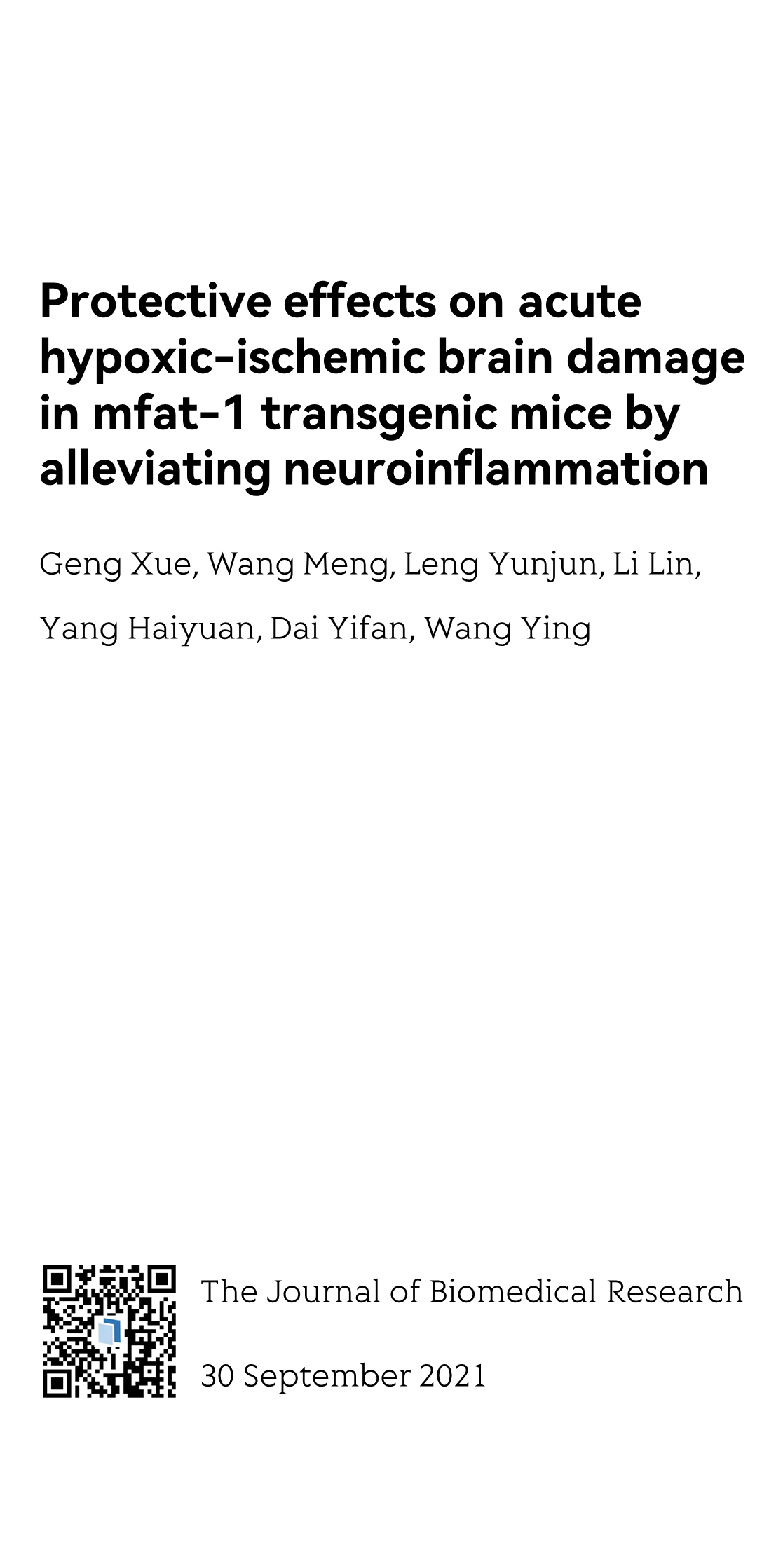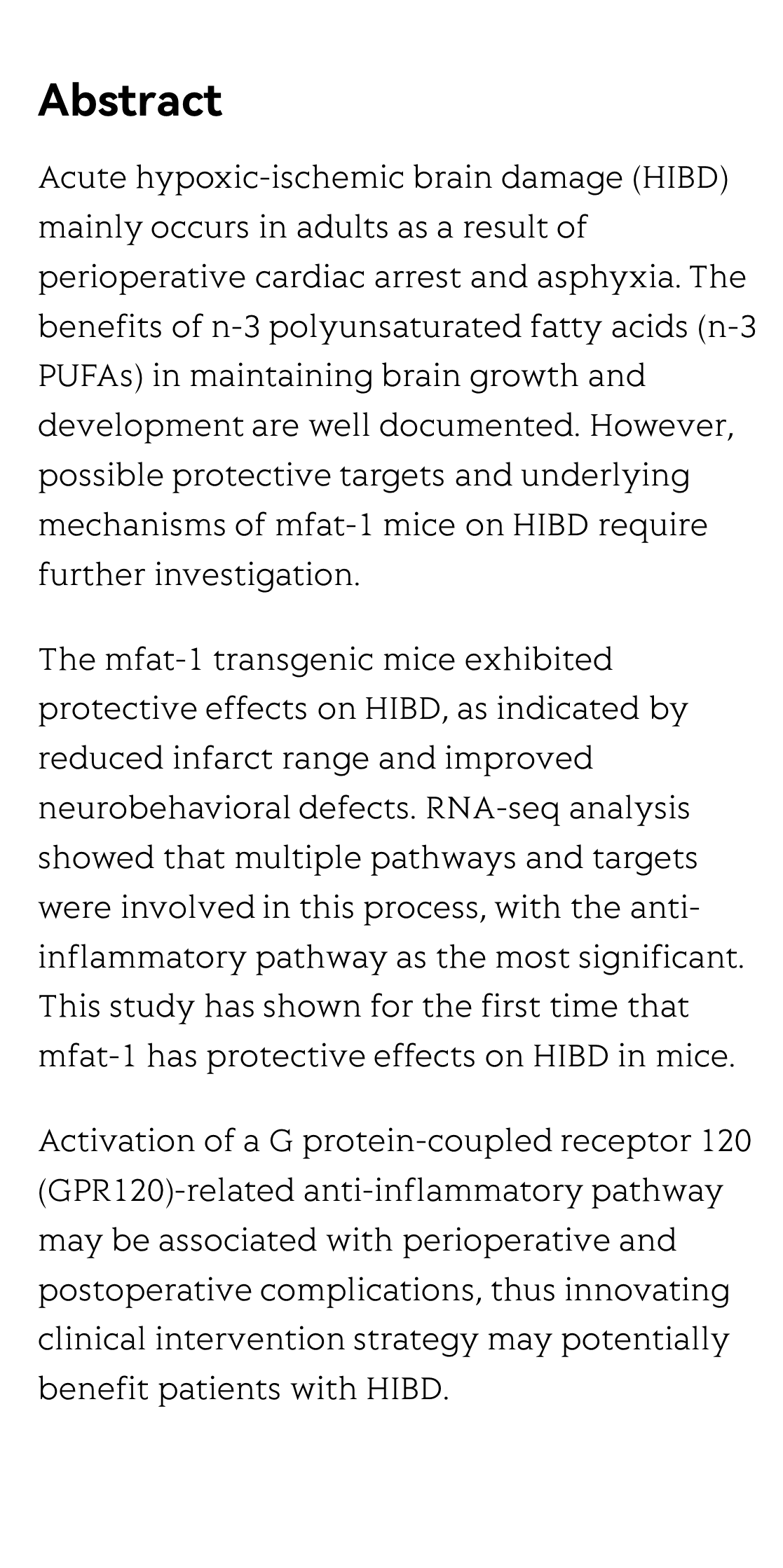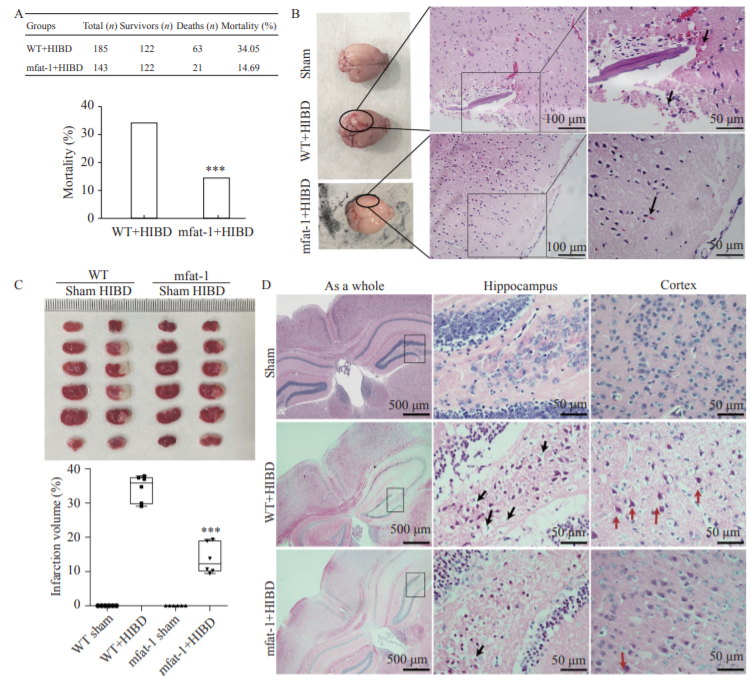(Peer-Reviewed) Protective effects on acute hypoxic-ischemic brain damage in mfat-1 transgenic mice by alleviating neuroinflammation
Geng Xue 耿雪 ¹, Wang Meng 王蒙 ¹, Leng Yunjun 冷允俊 ¹, Li Lin 李琳 ¹, Yang Haiyuan 杨海元 ¹ ², Dai Yifan 戴一凡 ¹ ², Wang Ying 王盈 ¹ ²
¹ Jiangsu Key Laboratory of Xenotransplantation, Nanjing Medical University, Nanjing, Jiangsu 211166, China
中国 江苏 南京 南京医科大学 江苏省异种移植重点实验室
² Key Laboratory of Targeted Intervention of Cardiovascular Disease, Collaborative Innovation Center for Cardiovascular Disease Translational Medicine, Nanjing Medical University. Nanjing, Jiangsu 211166, China
中国 江苏 南京 南京医科大学 心血管病转化医学协同创新中心 心血管病分子干预重点实验室
Abstract
Acute hypoxic-ischemic brain damage (HIBD) mainly occurs in adults as a result of perioperative cardiac arrest and asphyxia. The benefits of n-3 polyunsaturated fatty acids (n-3 PUFAs) in maintaining brain growth and development are well documented. However, possible protective targets and underlying mechanisms of mfat-1 mice on HIBD require further investigation.
The mfat-1 transgenic mice exhibited protective effects on HIBD, as indicated by reduced infarct range and improved neurobehavioral defects. RNA-seq analysis showed that multiple pathways and targets were involved in this process, with the anti-inflammatory pathway as the most significant. This study has shown for the first time that mfat-1 has protective effects on HIBD in mice.
Activation of a G protein-coupled receptor 120 (GPR120)-related anti-inflammatory pathway may be associated with perioperative and postoperative complications, thus innovating clinical intervention strategy may potentially benefit patients with HIBD.
Flicker minimization in power-saving displays enabled by measurement of difference in flexoelectric coefficients and displacement-current in positive dielectric anisotropy liquid crystals
Junho Jung, HaYoung Jung, GyuRi Choi, HanByeol Park, Sun-Mi Park, Ki-Sun Kwon, Heui-Seok Jin, Dong-Jin Lee, Hoon Jeong, JeongKi Park, Byeong Koo Kim, Seung Hee Lee, MinSu Kim
Opto-Electronic Advances
2025-09-25
Dual-frequency angular-multiplexed fringe projection profilometry with deep learning: breaking hardware limits for ultra-high-speed 3D imaging
Wenwu Chen, Yifan Liu, Shijie Feng, Wei Yin, Jiaming Qian, Yixuan Li, Hang Zhang, Maciej Trusiak, Malgorzata Kujawinska, Qian Chen, Chao Zuo
Opto-Electronic Advances
2025-09-25





